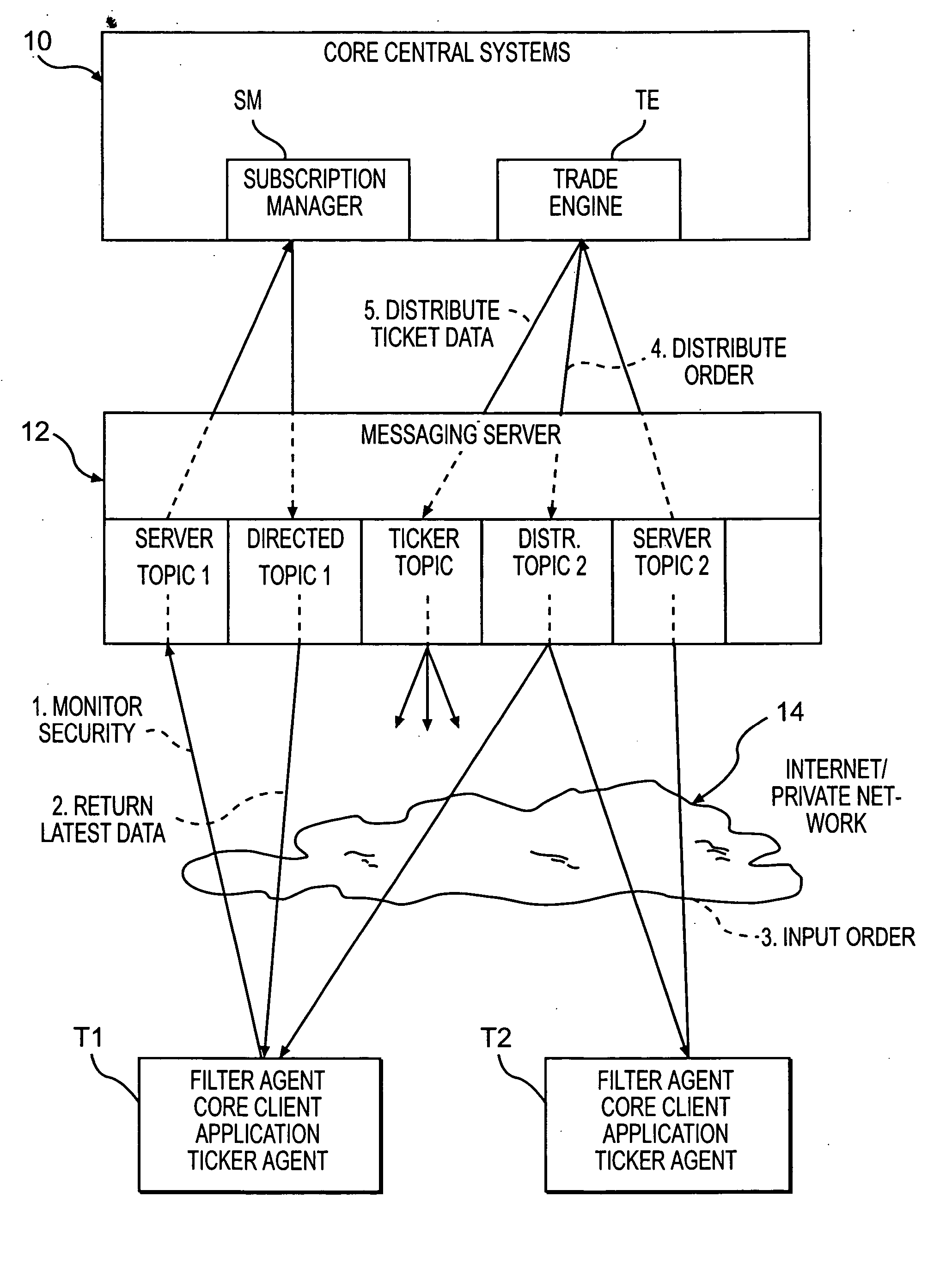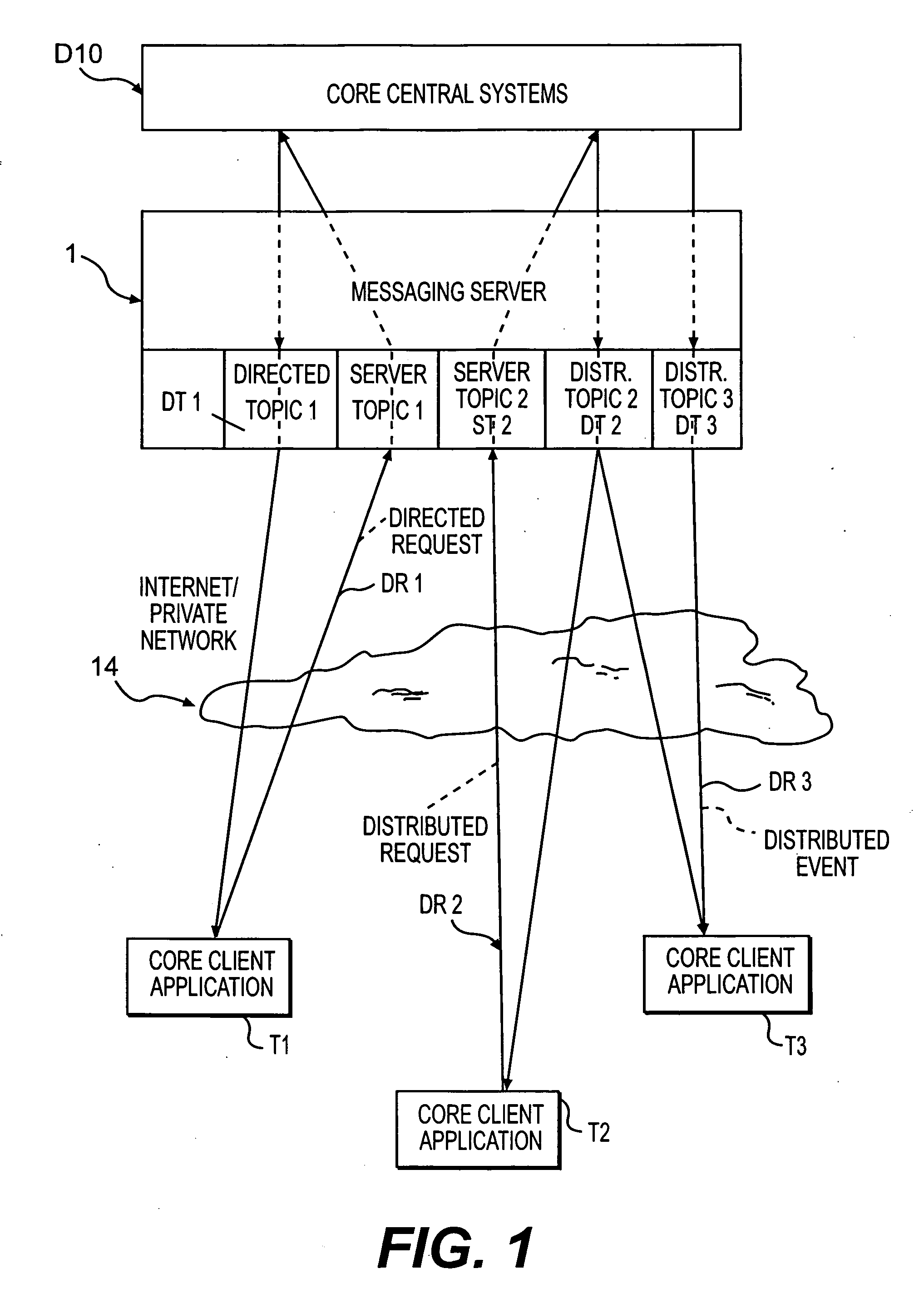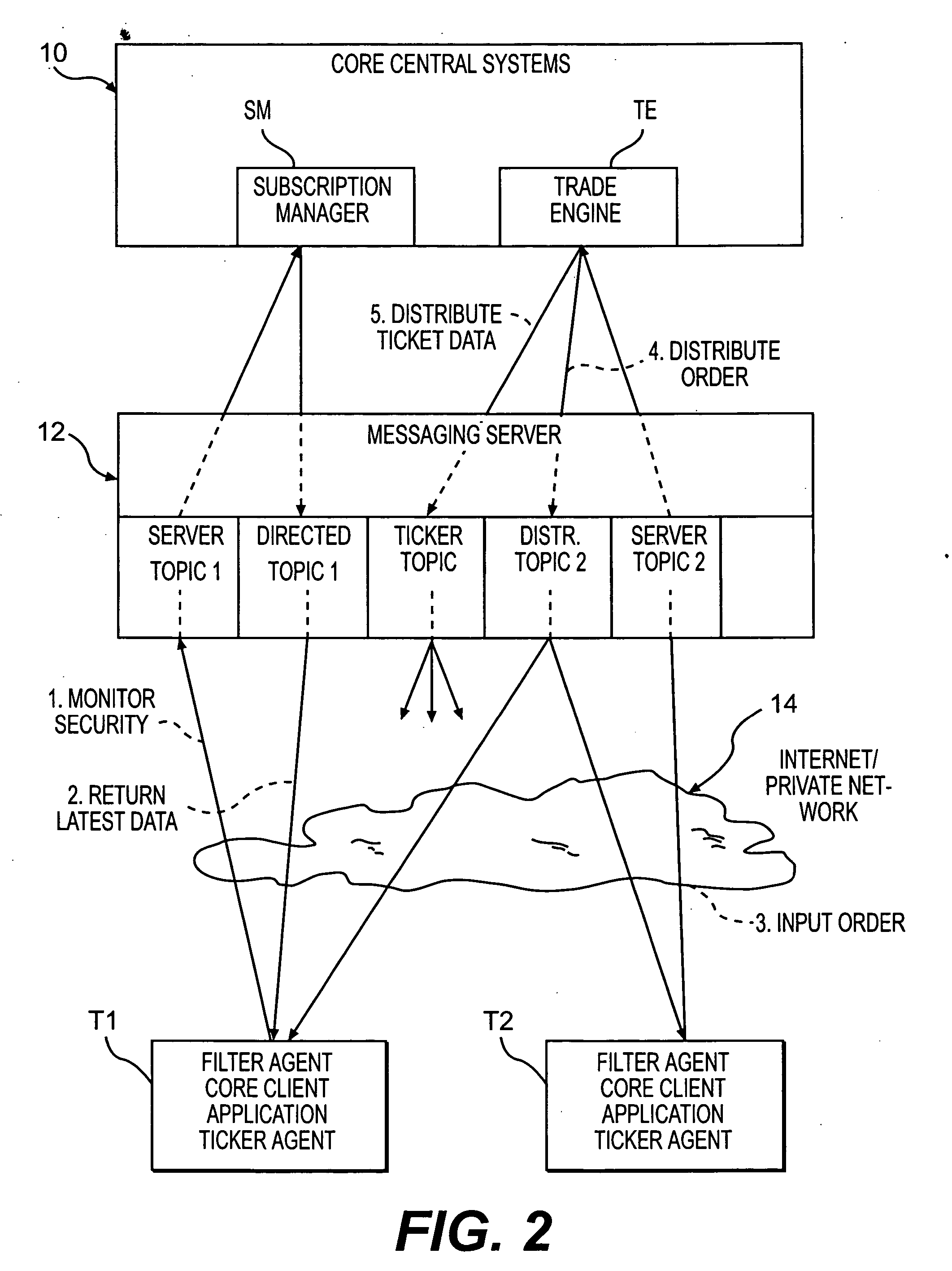Automated system for conditional order transactions in securities or other items in commerce
a technology of conditional order and automatic system, applied in the field of automatic system for conditional order transactions in securities or other items in commerce, can solve the problems of no active linkage of computer networks and market failure to be exploited, and achieve the effect of facilitating contingent or conditional trading
- Summary
- Abstract
- Description
- Claims
- Application Information
AI Technical Summary
Benefits of technology
Problems solved by technology
Method used
Image
Examples
example 1
[0086] One user can view a risk arbitrage Order Book in several formats, first an acquiree security price vs. acquiror security price, second, an “arbitrage discount” price of the acquiree vs. the acquiror security price, and third, a “return on investment” vs. the acquiror security price. In the first instance, the user is viewing security prices and there are no analytic assumptions involved, but he can change the underlying price and view the set of orders properly sorted and displayed as if the price of the underlying security had changed. This would not have an impact on the way other users viewed the information, nor would it have any impact upon the way the trade engine viewed manages the orders.
example 2
[0087] In the above example (third view: “return on investment” vs. the acquiror security price) assumptions as to time remaining until the close of the deal, cost of carry, short rebates, expected dividend dates, volatility to name a few can be input by each user and the interface can display the orders with that user's assumptions implicit in the “return on investment” view of the Order Book. Because each user's Order Book shows different numbers, one user can enter an order on an 18% IRR while another can enter an order on a 12% IRR and they may be exactly the same (each represented as 12% on one user's screen and 18% on another's, and different other terminals).
example 3
[0088] Currently the bandwidth requirements of the options markets are enormous and growing daily. This is because there are multiple contracts (puts and calls) on each underlying security. When the underlying stock price of a security like IBM changes, the floor traders raise or lower the bid and offer prices on the options. Since a ½-point change in IBM can have an impact on the prices of 100-200 contracts, the bandwidth usage for the distribution of the new quotes can be very large. Our distribution of algorithmic orders, as a methodology, has the effect of reducing the bandwidth because we need only send the changes in the underlying security price to the user interface. The user interface will take the changes in the underlying security price and represent the orders in the 100-200 contracts without the need for a “redistribution” of quotes.
PUM
 Login to View More
Login to View More Abstract
Description
Claims
Application Information
 Login to View More
Login to View More - R&D
- Intellectual Property
- Life Sciences
- Materials
- Tech Scout
- Unparalleled Data Quality
- Higher Quality Content
- 60% Fewer Hallucinations
Browse by: Latest US Patents, China's latest patents, Technical Efficacy Thesaurus, Application Domain, Technology Topic, Popular Technical Reports.
© 2025 PatSnap. All rights reserved.Legal|Privacy policy|Modern Slavery Act Transparency Statement|Sitemap|About US| Contact US: help@patsnap.com



